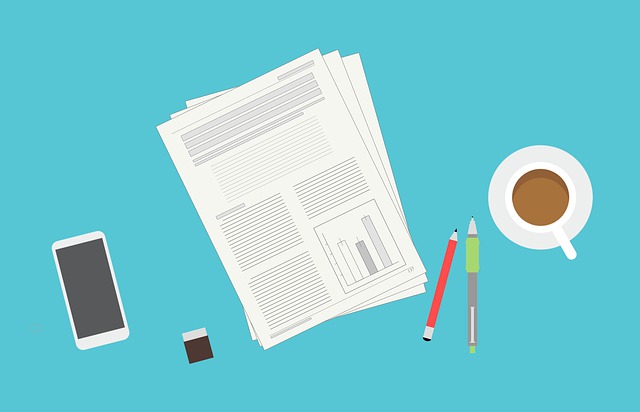Are you ready to dive into the world of email analytics and reporting? Don’t worry, we’ve got you covered! In this beginner’s guide, we’ll break down the complex metrics and terminology that can sometimes feel like a foreign language. So buckle up and get ready to navigate the vast ocean of data, armed with knowledge and a thirst for insights.
As the saying goes, ‘knowledge is power,’ and understanding email analytics is no different. By deciphering open rates and click-through rates, you’ll gain valuable insights into your subscribers’ engagement levels. But that’s just the tip of the iceberg!
We’ll also explore conversion rates and ROI, helping you measure the effectiveness of your email campaigns and make data-driven decisions.
But it doesn’t stop there. We’ll delve into bounce rates and unsubscribe rates, unraveling the mysteries behind why some emails fail to reach their intended recipients. Plus, we’ll show you how A/B testing can optimize your campaigns and boost your results.
Segmentation and targeting are essential elements of any successful email marketing strategy, and we’ll show you how to leverage these techniques to deliver personalized content that resonates with your audience.
So, if you’re ready to turn data into action and maximize the impact of your email marketing efforts, keep reading. By the end of this guide, you’ll be armed with the knowledge and tools to drive strategy, improve results, and take your email marketing to the next level.
Key Takeaways
- Understanding email analytics is crucial for measuring the effectiveness of email campaigns and making data-driven decisions.
- Key metrics like open rates, click-through rates, conversion rates, and bounce rates provide valuable insights into subscriber engagement and email deliverability.
- A/B testing allows for optimizing email campaigns by comparing the performance of different versions of emails.
- Segmentation and targeting are essential for personalizing content and tailoring email campaigns to specific groups of recipients.
Understanding Open Rates and Click-Through Rates
Now, let’s dive into understanding how YOU can track your email open rates and click-through rates to measure the success of your email campaigns!
Measuring engagement is crucial in evaluating the effectiveness of your email marketing strategy. Open rates indicate the percentage of recipients who opened your email, providing insights into the relevance of your content and subject lines. To optimize open rates, consider personalizing subject lines and testing different variations to determine which ones resonate best with your audience.
Click-through rates, on the other hand, measure the percentage of recipients who clicked on links within your email. This metric reflects the level of interest and engagement generated by your content.
By tracking both open rates and click-through rates, you gain valuable data to refine your email campaigns and improve their performance.
Now, let’s explore how tracking conversion rates and ROI can further enhance your email marketing efforts.
Tracking Conversion Rates and ROI
To really see the impact of your efforts, you’ll want to keep an eye on how well your messages are leading to desired actions and ultimately driving results. Measuring email engagement is crucial in understanding if your email campaigns are effective.
Here are four metrics to track when it comes to tracking conversion rates and ROI:
-
Conversion Rate: This metric measures the percentage of recipients who completed a desired action, such as making a purchase or filling out a form, after clicking on a link in your email.
-
Average Order Value: This metric calculates the average amount of money spent by customers who made a purchase through your email campaign.
-
Customer Lifetime Value: This metric determines the net profit generated from a customer throughout their entire relationship with your business.
-
Return on Investment (ROI): This metric calculates the profitability of your email campaigns by comparing the revenue generated to the costs involved.
By analyzing these metrics, you can gain insights into the effectiveness of your email marketing efforts.
Next, we will explore how to analyze bounce rates and unsubscribe rates.
Analyzing Bounce Rates and Unsubscribe Rates
Let’s dive into the analysis of bounce rates and unsubscribe rates and uncover valuable insights about your email campaigns.
Analyzing engagement rates is crucial to understanding how your audience interacts with your emails. Bounce rates indicate the percentage of emails that weren’t successfully delivered to recipients’ inboxes. By monitoring bounce rates, you can identify potential issues with your email list quality or email deliverability.
On the other hand, unsubscribe rates provide insights into the effectiveness of your content and targeting strategies. High unsubscribe rates may indicate that your emails aren’t meeting subscribers’ expectations. To improve engagement and reduce spam complaints, it’s important to regularly clean your email list, personalize your content, and ensure that your emails are relevant and valuable to your audience.
Now, let’s explore how utilizing A/B testing can further optimize your email campaigns.
Utilizing A/B Testing for Optimization
By experimenting with different variations of your email campaigns through A/B testing, you can uncover the hidden keys that unlock the door to higher engagement and conversion rates, paving the way for a smoother journey towards email marketing success.
A/B testing strategies involve creating two versions of an email, each with a slight difference, and then sending them to a subset of your audience. By measuring engagement rates, such as open rates, click-through rates, and conversion rates, you can determine which version performs better.
This data-driven approach allows you to make informed decisions about your email content, subject lines, call-to-action buttons, and even the timing of your campaigns. It eliminates guesswork and provides valuable insights into what resonates with your audience.
As you explore segmentation and targeting in the next section, you can use the findings from A/B testing to further refine your email marketing strategy.
Exploring Segmentation and Targeting
Segmentation and targeting are crucial for tailoring your email campaigns to specific groups of recipients, ensuring that your messages resonate with them and drive higher engagement and conversion rates. By dividing your audience into distinct segments based on demographics, interests, or behavior, you can create customer personas that guide your content creation. Understanding who your recipients are and what they want allows you to deliver personalized content that speaks directly to their needs and preferences. This targeted approach increases the chances of your emails being opened, read, and acted upon.
To illustrate the impact of segmentation and targeting, consider the following table:
| Segment | Open Rate | Click-Through Rate | Conversion Rate |
|---|---|---|---|
| Segment A | 20% | 10% | 5% |
| Segment B | 30% | 8% | 3% |
| Segment C | 25% | 12% | 6% |
As you can see, each segment responds differently to your emails, highlighting the importance of tailoring your messaging. By using customer personas and personalized content, you can optimize your email campaigns for each segment, improving overall performance.
Now, let’s explore how you can use email analytics to drive strategy and improve results.
Using Email Analytics to Drive Strategy and Improve Results
Now that you have a solid understanding of segmentation and targeting, it’s time to dive into the exciting world of using email analytics to drive strategy and improve your results. By utilizing the power of email analytics, you can gain valuable insights into your customer base and tailor your email campaigns accordingly.
Here are five key benefits of using email analytics for customer segmentation and measuring email engagement and response rates:
- Identify your most engaged subscribers and focus your efforts on nurturing those relationships.
- Discover opportunities to personalize your emails based on customer behavior and preferences.
- Measure the success of your email campaigns by tracking open rates, click-through rates, and conversion rates.
- Gain insights into which types of content resonate best with your audience, allowing you to optimize future campaigns.
- Identify areas for improvement and make data-driven decisions to continuously enhance your email marketing strategy.
By leveraging the power of email analytics, you can take your email marketing efforts to new heights and achieve better results than ever before.
Frequently Asked Questions
How can I determine the effectiveness of my email subject lines?
Are you curious about the effectiveness of your email subject lines? Well, fear not! With email subject line analysis, you can delve into the world of measuring email open rates.
By carefully examining the open rates of your emails, you can determine how well your subject lines are capturing the attention of your recipients. This data-driven approach allows you to make informed decisions and optimize your subject lines for maximum impact.
Happy analyzing!
What are some common reasons for high bounce rates in email campaigns?
High bounce rates in email campaigns can be caused by several factors. One common reason is an invalid or inactive email address.
Another factor is if the recipient’s email server has strict spam filters that block incoming messages.
To reduce bounce rates, ensure that email addresses are valid and up-to-date before sending campaigns. Additionally, regularly clean your email list by removing inactive addresses.
Implementing double opt-in strategies can also help minimize bounce rates by confirming the validity of email addresses.
How can I use A/B testing to optimize my email content?
To optimize your email content using A/B testing techniques, start by creating two versions of your email with slight variations.
Test different elements such as subject lines, call-to-action buttons, or images.
Measure engagement rates like open rates, click-through rates, and conversion rates to determine which version performs better.
By analyzing the data, you can make data-driven decisions and improve your email content to effectively engage your audience and drive desired actions.
A little experimentation can go a long way in boosting your email marketing success.
What are some best practices for segmenting my email list?
To effectively segment your email list, you should employ various email segmentation strategies. This practice involves dividing your audience into specific segments based on demographics, purchase history, or engagement level.
By doing so, you can create personalized email campaigns tailored to each segment’s preferences and needs. This approach offers numerous benefits, including increased engagement, higher open and click-through rates, improved customer satisfaction, and higher conversion rates.
Implementing email segmentation strategies can significantly enhance the success of your email marketing efforts.
How can I use email analytics to improve my overall marketing strategy?
To improve your overall marketing strategy, start by leveraging email analytics.
Dive into the data to understand your customer segments better. By analyzing open rates, click-through rates, and engagement metrics, you can identify which segments are most responsive to your campaigns.
Use this insight to tailor your messaging and offers to each segment’s preferences.
Additionally, track conversion rates to measure the effectiveness of your email campaigns and make data-driven decisions to optimize your marketing efforts.
Conclusion
In conclusion, email analytics and reporting metrics are essential tools for any marketer looking to optimize their email campaigns.
By understanding open rates and click-through rates, tracking conversion rates and ROI, analyzing bounce rates and unsubscribe rates, utilizing A/B testing, and exploring segmentation and targeting, you can improve your email strategy and drive better results.
Remember, email analytics are like a compass, guiding you towards success in the vast sea of digital marketing. So dive in, analyze the data, and set sail towards greater email marketing success.









